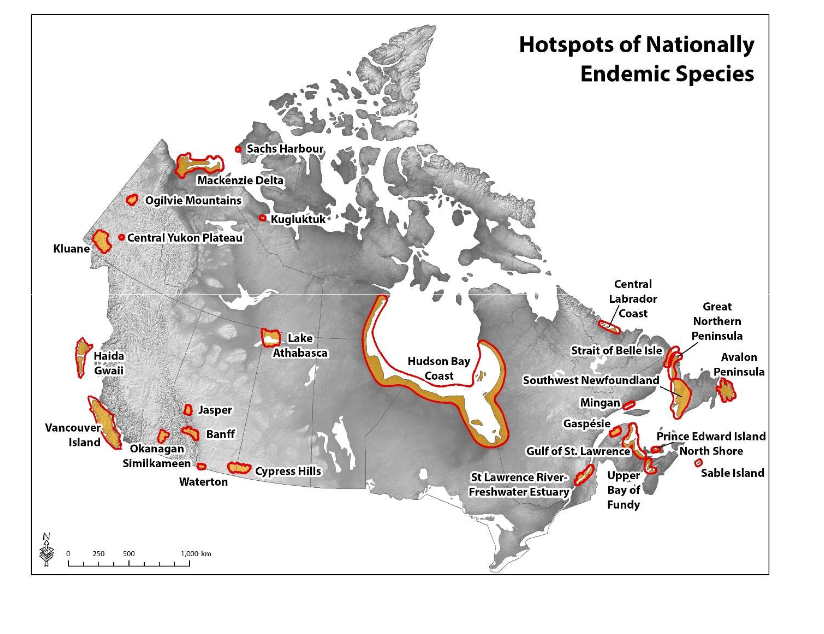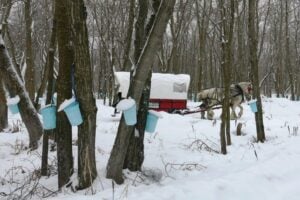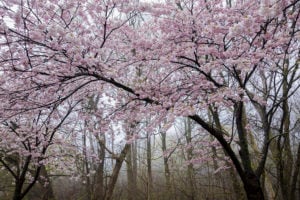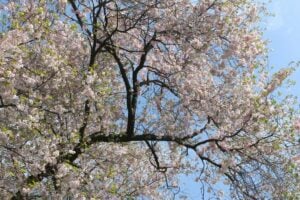
An adult whooping crane, a critically endangered species, is seen in captivity at the Audubon Nature Institute’s Species Survival Center in New Orleans, Thursday, June 21, 2018. THE CANADIAN PRESS/AP-Gerald Herbert
For the first time, Canadian biologists have come up with a list of plants, insects and animals that live only in this country and say many of them are in danger of extinction if they haven’t died out already.
Nature Conservancy of Canada biologist Dan Kraus said when the United Nations report on global biodiversity warned a year ago that as many as one million species around the world were at risk of extinction, it prompted discussions in Canada about conservation efforts here.
“We were surprised that there wasn’t a comprehensive list of Canadian species that only occur in Canada,” said Kraus.
Nature Conservancy worked with the network of experts through NatureServe Canada to study at least a dozen national and global databases looking for species that had only ever been documented in Canada. That effort came up with an initial list of 308, with 167 others that are possibly endemic, meaning they live only here, but need more study.
Almost half the known endemic Canadian species are invertebrates, including 21 butterflies, 40 moths, and 25 kinds of beetles. There are also 21 mammals, 11 birds, and 109 kinds of plants.
Kraus said almost 40 per cent of the species and subspecies on the list are considered critically imperilled or imperilled and eight are already extinct, including the Dawson caribou, Labrador duck and the Vancouver Island blue butterfly.
Of the 21 mammals on the list, two-thirds are considered at risk.
Only 10 per cent of the endemic species are listed as globally secure, the report said, and Canada’s own national assessment body, the Committee on the Status of Endangered Wildlife in Canada, has studied just one-fifth of the total number.
Species in British Columbia
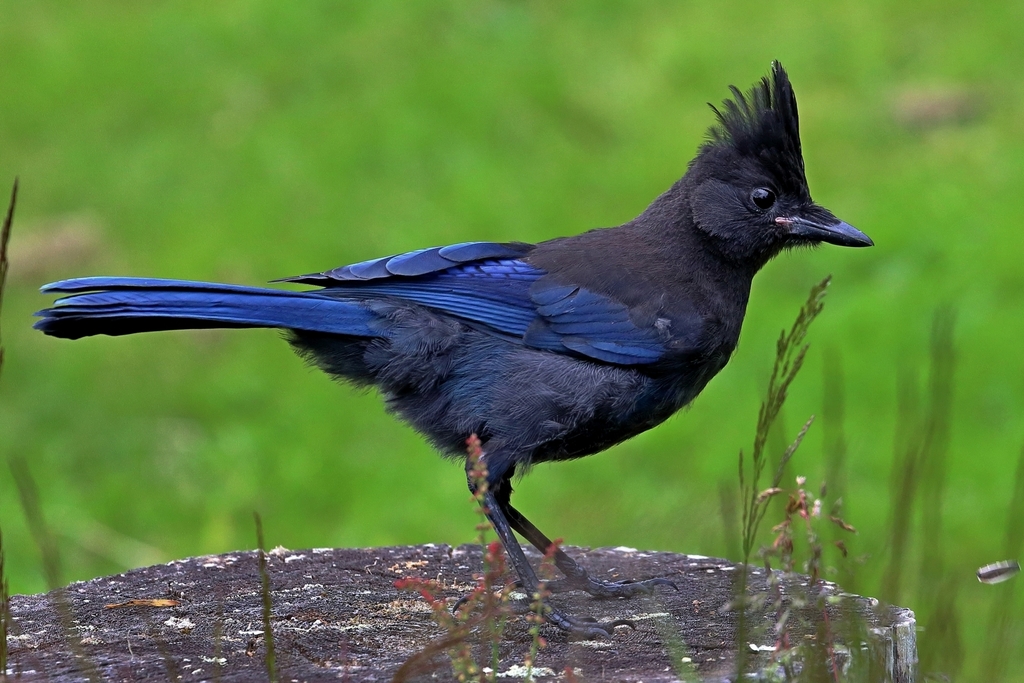
Pacific Steller’s Jay; Credit: chowan (iNaturalist)
British Columbia has 105 nationally endemic species, this is the highest in all of Canada and is over one-third of Canada’s nationally endemic species. 76 of these endemic species are only found in BC, which is also the highest
number in Canada.
Some species include:
- Pacific Steller’s Jay (Cyanocitta stelleri)
- Vancouver Island Marmot (Marmota vancouverensis)
- Vancouver Island Water Shrew(Sorex navigator brooksi)
- Queen Charlotte Hairy Woodpecker (Dryobates villosus picoideus)
- Queen Charlotte Pine Grosbeak (Pinicola enucleator carlottae)
- Townsend’s Vole (Microtus townsendii)
British Columbia has three notable hotspots for national endemic species: Vancouver
Island, Haida Gwaii and Okanagan-Similkameen.
Species in Alberta
There are 54 endemic species that live in Alberta, however, most can be found in other parts of the country. Only 18 species are exclusive to the province.
Some species include:
- Lake Louise Arnica (Arnica louiseana)
- Banff Springs Snail (Physella johnsoni)
- Cordilleran Stygobromid (Stygobromus secundus)
These epidemic species are usually found in these 5 hotspots: Waterton, Banff, Jasper, Cypress Hills, and Lake Athabasca.
Species in Saskatchewan
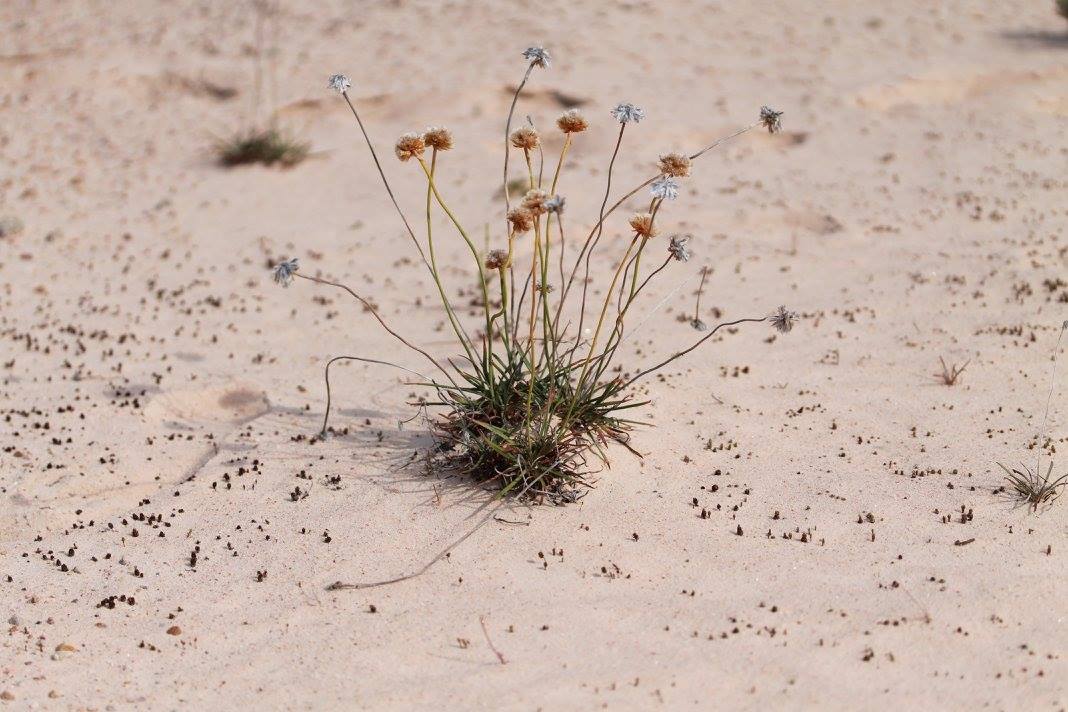
Athabasca Thrift; Credit: Beth Dolmage
Saskatchewan has 36 nationally endemic species with 10 endemic species only found in the province.
Some species include:
- Large-headed Woolly Yarrow (Achillea millefolium var. megacephala)
- a geometrid moth (Animomyia Hardwicke)
- Athabasca Thrift Armeria (maritima ssp. interior)
- Saskatchewan Hawthorn (Crataegus sheila-phippsiae var. saskatchewanensis)
Two hotspots for nationally endemic species in the province have been identified as Cypress Hills and Lake Athabasca.
Species in Manitoba
There are 31 nationally endemic species that have been documented from Manitoba. With seven nationally endemic species only occuring in the province.
Some species include:
- Harris’s Sparrow (Zonotrichia querula)
The Hudson Bay Coast hotspot of Canadian endemic species occurs in northern Manitoba.
Species in Ontario
Ontario has a total of 28 endemic species, nine endemic species are entirely restricted to Ontario.
Some species include:
- Eastern Wolf (Canis lupus lycaon)
- Small scavenger beetle (Hydnobius autumnalis)
- Slender Notchwort (Crossocalyx tenuis)
- A lichen (Myriolecis carlottiana)
- Cain’s Screw Moss (Syntrichia cainii)
- Macoun’s Shining Moss (Neomacounia nitida)
Species in Quebec
Quebec has 57 nationally endemic species, the second highest number in Canada. Sixteen nationally endemic species can only be found in Quebec.
Some species include:
- Copper Redhorse (Moxostoma hubbsi)
- Quebec Rockcress (Boechera quebecensis)
- Gaspé Saxifrage (Micranthesgaspensis)
- Gaspésie Grasshopper (Melanoplus gaspesiensi).
- Ungava Seal (Phoca vitulina mellonae)
Three hotspots for nationally endemic species have been identified from Quebec: St. Lawrence River Freshwater Estuary, Mingan and Gaspésie.
Species in New Brunswick
New Brunswick has 17 nationally endemic species, but only has one endemicspecies restricted to province, the rove beetle (Mitosynum vockerothi) due to its shared ecoregions with Quebec and Nova Scotia.
Some species include:
- Gulf of Saint-Lawerence aster
- Maritime Ringlet (Coenonympha nipisiquit)
- Salt Marsh Copper (Lycaena dospassosi)
- Short-tailed Swallowtail (Papilio brevicauda bretonensis)
- Maritime Shrew (Sorex maritimensis)
Two hotspots for nationally endemic species have been identified from New Brunswick: Upper Bay of Fundy and Gulf of St. Lawrence.
Species in Prince Edward Island
Prince Edward Island (PEI), the smallest of Canada’s territories and provinces, has
seven nationally endemic species. All of the nationally endemic species recorded from PEI occur in other Maritime
provinces
Some species include:
- Salt Marsh Copper (Lycaena dospassosi)
- Gulf of St. Lawrence Beach Pinweed (Lechea maritima var. subcylindrica)
- Fernald’s Serviceberry (Amelanchier fernaldii)
One hotspot for nationally endemic species has been identified from the northern
coast of Prince Edward Island.
Species in Nova Scotia
Nova Scotia, despite it’s small size, has an extraordinary richness of nationally endemic
species. Twenty-eight species have been documented over 40 percent of the national endemic species found in Nova Scotia do not occur anywhwere else.
Some species include:
- Atlantic Whitefish (Coregonus huntsmani)
- Maritime Needlefly (Leuctra baddecka)
- Sable Island Sweat Bee (Lasioglossum sablense)
Nova Scotia has two hotspots for national endemic species: Sable Island and the Upper Bay of Fundy.
Species in Newfoundland and Labrador
Newfoundland and Labrador has a very high richness of nationally endemic species with forty species have been
documented, almost all of which occur on the island of Newfoundland. Over one-quarter of the nationally endemic species found in Newfoundland and Labrador do not occur anywhere else.
Some species include:
- American Marten (Martes americana atrata)
- Gros Morne Cortinarius (Cortinarius grosmorneënsis)
Five hotspots for nationally endemic species have been identified from Newfoundland and Labrador: Avalon Peninsula, Southwest Newfoundland, Northern Peninsula, Strait of Belle Isle and Central Labrador Coast.
Species in Nunavut
Canada’s largest territory has 29 nationally endemic species with five endemic species found only in Nunavut.
Some species include:
- Peary Caribou (Rangifer tarandus pearyi)
- Johansen’s Sulphur (Colias johanseni)
- Ellesmere Island Braya (Braya humilis ssp. ellesmerensis)
- Prostrate Braya (Braya glabella ssp. prostrata)
- Natazhati Fritillary (Boloria natazhati bankslandia)
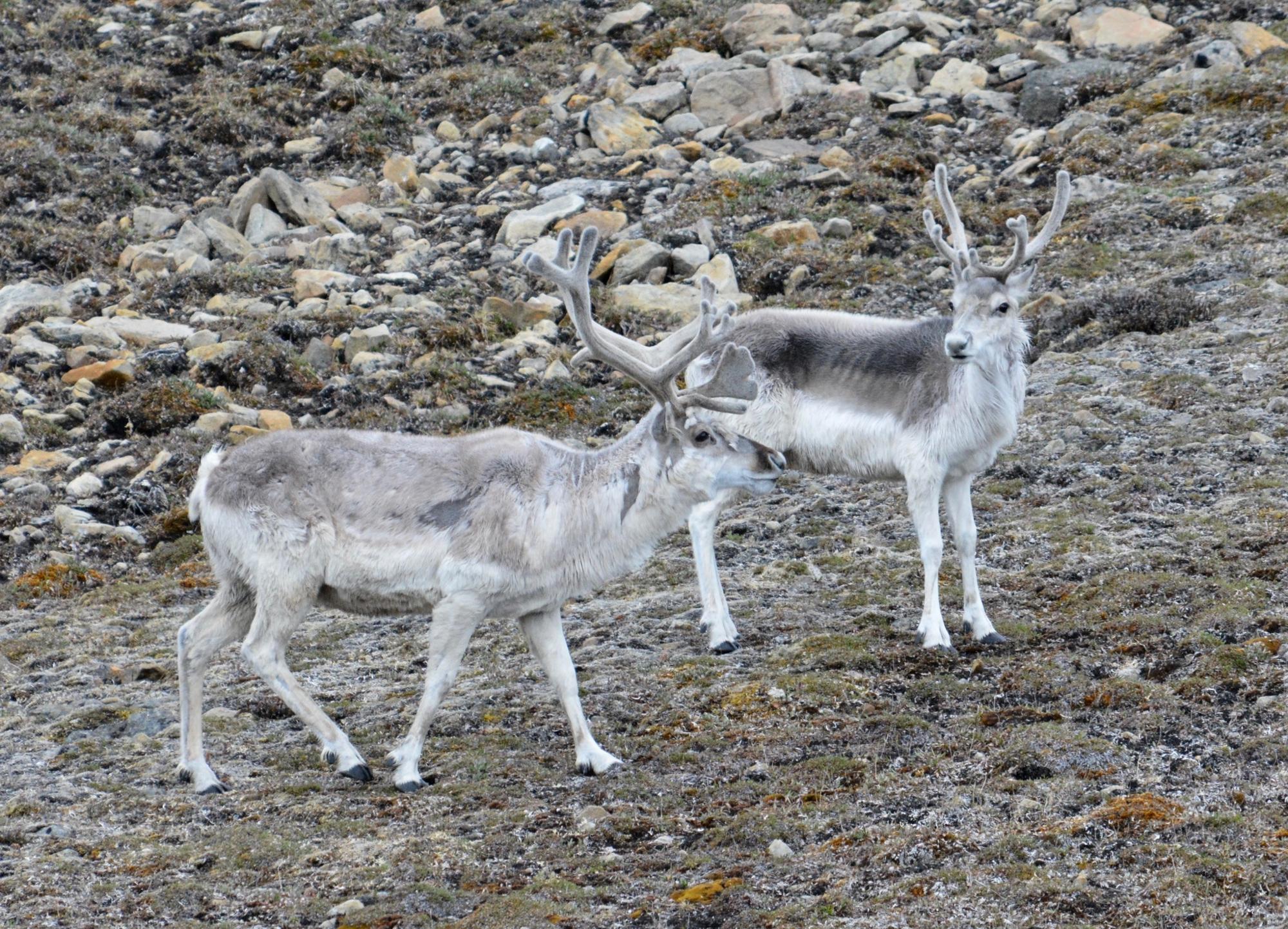
Credit: Anthony B. Zerafa (iNaturalist)
Two hotspots for nationally endemic species have been identified from Nunavut:
Kugluktuk on the northern coast of the mainland and the Hudson Bay Coast.
Species in Northwest Territories
The Northwest Territories has 32 nationally endemic species of which 5 are entirely restricted to the region.
Some species include:
- Hairy braya (Braya pilosa)
- Nahanni Arctic (Oeneis uhleri nahanni),
- Sand Bluegrass (Poa ammophila)
Mackenzie Delta and Sachs Harbour are hotspots for nationally endemic species in the Northwest Territories
Species in Yukon
Yukon has 43 nationally endemic species, almost half of the endemic species are entirely unique to Yukon.
Some species include:
- Yukon draba (Draba yukonensis)
- Elko Paintbrush (Castilleja miniata var. fulva)
- Western Arctic Pondsnail (Stagnicola kennicotti)
Three hotspots for nationally endemic species have been identified from Yukon: Ogilvie Mountains, Kluane and Central Yukon Plateau
Kraus said Canada needs to make a bigger effort to identify and protect its own species because nobody else is going to do it.
“There is no Plan B,” he said.
It’s why they named the report “Ours to Save,” he said.
Kraus is also hoping Canadians will feel the need to take ownership of these species and do more to learn about risks to wildlife in Canada.
“A big part of this report is kind of increasing that awareness,” he said. “If you ask the average Canadian to name an endangered species they may not even name a Canadian species.”
Kraus said the species on the list “all have incredible stories.” How they survived the last glacial period, how they were discovered, how they evolved over thousands of years, are all really interesting tales, and some of them are also simply spectacular to look at.
Kraus said even he has never heard of many of the species on the list, with many only found in very small areas. Almost two-thirds of the endemic species on the new list are only found in one province or territory, and many of those only in one part of that particular province.
Patrick Henry, the executive director of NatureServe Canada, said the reason to make an effort to protect these species is as simple as not knowing for sure what will happen if we don’t.
“We are starting to understand more how ecosystems work and the important role that various species play and until we really fully understand the implications of losing certain species and certain ecosystems it is in our best interest, and of course in the best interest of the species, to make sure they are safe and secure and do not go extinct.”
— With files from the Canadian Press
